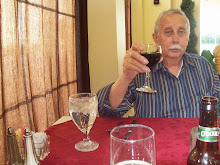According to Wikipedia, an elf is a mythical creature of Germanic origin which survives in northern European folklore. It is believed that they originated as a race of minor gods of nature and fertility. Elves are often pictured as youthful-seeming men and women of great beauty living in forests and other natural places, underground, or in wells and springs. They have been portrayed to be long-lived or immortal and they have magical powers attributed to them.
The actual origin of fairies is not clear. Various experts believe that they are nature spirits, the dead, elementals, pagan deities and so forth. The fairy tradition in literature began in the 1380s, with Chaucer and Gower. In their eyes, the fairies are a vanishing race, partly frightening and partly comic. However, the fairy mythology contains a consistent set of beliefs, that fairies and elves dance in rings, live in hills, are ruled by a queen, and so forth.
In northern England, elf is retained as the usual word for beings in the modern period, the Romance fairy being rejected. This may well be the result of Scandinavian influence. Scandinavian influence is certainly present in those place names which refer to dwarfs. Mythological dwarfs are found in northern England and Scotland place names, due to the Norse influence.
In Wales fairies or elves are called the "Tylwyth Teg." According to one authority, the fairies were men and women of mortal flesh and blood, and that the later superstitions are a mere echo of tales which first were told of real beings. There is a tradition of a race of beings who, in the middle of the sixteenth century, inhabited the Great Dark Wood (Coed y Dugoed Mawr) in Merionethshire, and who were called the Red Fairies. They lived in dens in the ground, had fiery red hair and long strong arms, and stole sheep and cattle by night. There are cottages in Cemmaes parish, near the Great Dark Wood, with scythes in the chimneys, which were put there to keep these terrible beings out.
A theory in Wales is that the Tylwyth Teg are the souls of dead mortals not bad enough for hell nor good enough for heaven. They are doomed to live on earth, to dwell in secret places, until the resurrection day, when they will be admitted into paradise. Meantime they must be either incessantly toiling or incessantly playing, but their toil is fruitless and their pleasure unsatisfying. A variation of this general belief holds these souls to be the souls of the ancient Druids Another variation considers the fairies bad spirits who were thrown over the battlements of heaven along with Satan, but did not fall into hell, but landed on the earth instead, where they are permitted to tarry till doomsday.
The Icelandic version, know as Huldre Folk in the Scandinavian countries, states that Lilith was washing her children when God spoke to her. In her fear she hid the children that had not been washed yet. When God had asked if these were all her children, she replied, "Yes." He decreed that those she had hidden from him would be hidden from man. Lullabies were sang to babies so that Lillith would not hear them cry, as it was lore she would take them to replace her own children that she lost.
In Devon, pixies are thought to be the souls of unbaptised children. That faeries were the heathen dead, not good enough for heaven, but not bad enough for hell.
The modern concept of Faery and faeryland can be attributed to Shakespeare, especially from the Midsummer Night's Dream.
On type of elf that is peculiar to the Irish is the leprechaun, which is a solitary creature avoiding contact with mortals and the whole fairy tribe. He pours all of his passion into the concentration of carefully making shoes. A leprechaun can always be found with a shoe in one hand and a hammer in the other. Most leprechauns are ugly, stunted creatures, not taller than boys of the age of ten or twelve. But they are broad and bulky, with faces like dried apples. They have a mischievous light in their eyes and their bodies, despite their stubbiness, usually move gracefully. They possess all the earth's treasures, but prefer to dress drab. Usually gray or green colored coats, a sturdy pocket-studded apron, and a hat, sometimes green or dusty red colored. They have been know to be foul-mouthed, smoke ill-smelling pipes called 'dudeens' and drink beer (or is it Guinness) from handy jugs. Leprechauns guard the fairies' treasures. Although, they hide the treasures well, the presence of a rainbow alerts mortals to the whereabouts of gold hordes. If a mortal catches a leprechaun and sternly demands his treasure, he will give it to the mortal. Rarely does this happen. Occasionally, especially after a wee too much Guinness, he will offer a mortal not only a drink but some of his treasure.



No comments:
Post a Comment